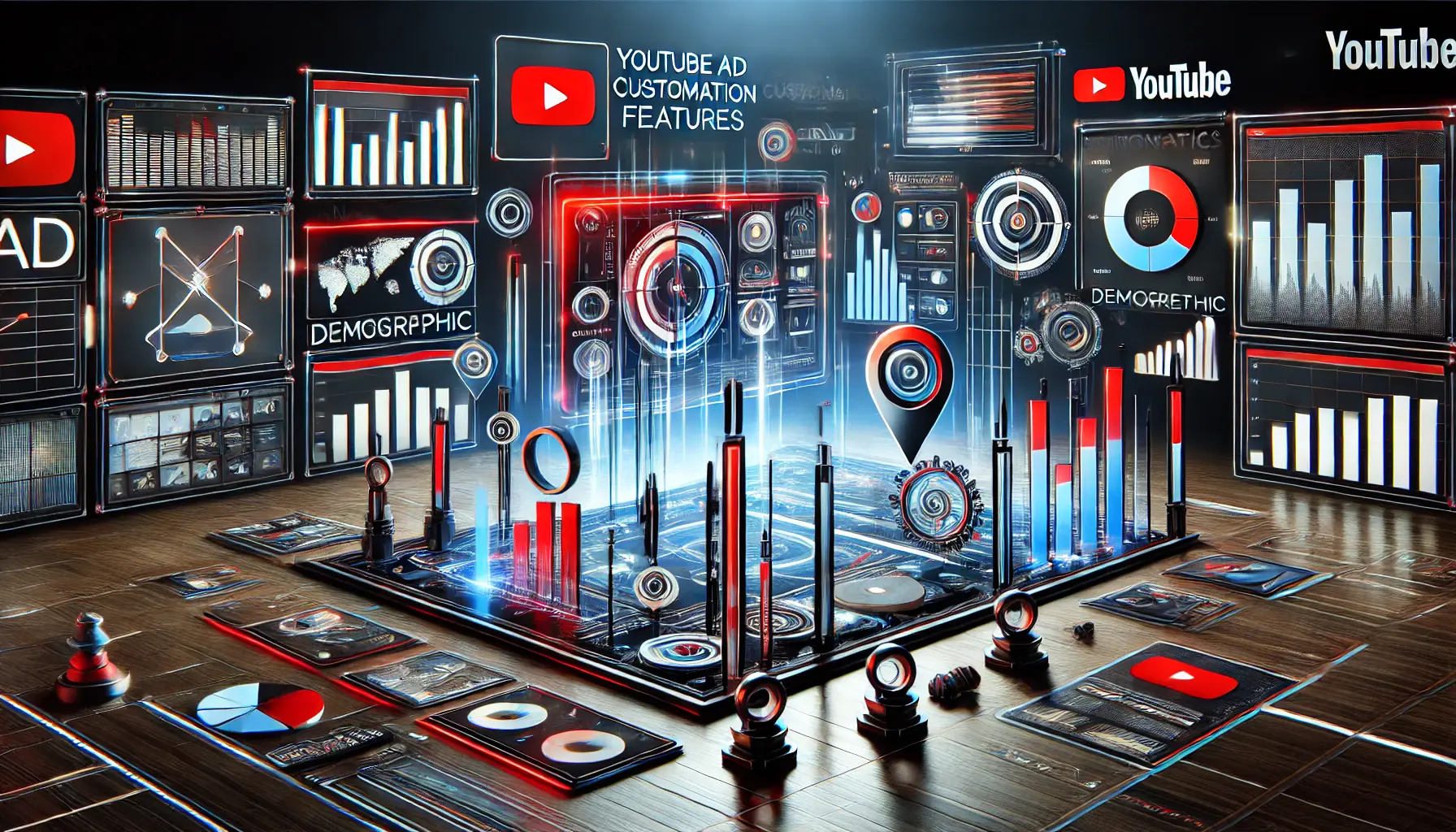Ad customization and variation stand at the forefront of digital marketing strategies, especially within the dynamic ecosystem of Apple Search Ads.
This approach not only enhances the visibility of advertisements but also significantly improves user engagement by delivering personalized ad experiences.
By tailoring ads to meet the unique preferences and behaviors of users, brands can achieve a higher level of relevance and connection, which is crucial in today’s saturated digital landscape.
The essence of ad customization lies in its ability to resonate with the target audience on a personal level.
This strategy involves a meticulous process of analyzing user data, market trends, and the performance of past advertisements to create variations that speak directly to the needs and interests of potential customers.
The ultimate goal is to craft ads that are not just seen but felt, fostering a sense of familiarity and trust that encourages user interaction and conversion.
- Understanding the Basics of Ad Customization
- Strategies for Effective Ad Customization
- Utilizing Technology for Ad Customization
- Challenges and Solutions in Ad Customization
- Best Practices for Ad Customization
- Future Trends in Ad Customization
- Integrating Ad Customization Across Platforms
- Conclusion: Mastering Ad Customization for Enhanced Engagement
- Ad Customization FAQs
Understanding the Basics of Ad Customization
The Role of Data in Ad Customization
At the heart of effective ad customization is the strategic use of data.
This encompasses a broad spectrum of information, from demographic details and browsing habits to device usage patterns and purchase history.
By harnessing this data, marketers can create a detailed profile of their target audience, enabling them to design ads that cater to specific interests and needs.
The precision in targeting ensures that each ad variation has the potential to significantly impact its intended audience, making every impression count.
Data-driven customization also allows for continuous optimization.
As ads are deployed and user interactions are analyzed, the insights gained can be used to refine and adjust ad variations.
This iterative process ensures that ad strategies remain agile and responsive to changing user behaviors and market dynamics, maximizing the effectiveness of each campaign.
Techniques for Creating Ad Variations
Creating variations of ads involves several techniques, each aimed at addressing different aspects of user engagement and conversion.
A/B testing, for instance, is a fundamental method where two or more versions of an ad are shown to similar audiences to determine which performs better.
This empirical approach helps identify the most effective elements of an ad, from headlines and images to call-to-action buttons.
Another technique is the use of dynamic ad content, which automatically adjusts certain elements of the ad based on the user’s past interactions, location, or even the time of day.
This level of personalization ensures that the ad content is as relevant and engaging as possible, increasing the likelihood of capturing the user’s attention and prompting action.
Incorporating user feedback and engagement metrics into the ad variation process is crucial for tailoring ads that resonate with the audience and drive conversions.
Ad customization and variation are not just about creating multiple versions of an ad; it’s about crafting targeted experiences that connect with users on a personal level.
By leveraging data and employing strategic techniques, marketers can enhance the relevance and impact of their ads, leading to improved performance and a stronger connection with their audience.
Strategies for Effective Ad Customization
Delving deeper into the realm of ad customization, it becomes evident that a strategic approach is essential for maximizing the impact of your advertising efforts.
The process goes beyond mere data analysis and creative design; it involves a comprehensive understanding of user behavior and market trends.
Here, we explore several strategies that can significantly enhance the effectiveness of ad customization and variation.
Segmentation and Targeting
One of the first steps in ad customization is segmentation.
This involves dividing the broader market into smaller, more manageable groups based on shared characteristics.
These segments can be defined by various criteria, including demographic factors, psychographic profiles, or user behavior.
Once these segments are established, targeting becomes much more precise, allowing for the creation of ad variations specifically designed for each group.
This targeted approach ensures that the ads are highly relevant to each segment, increasing the likelihood of engagement and conversion.
- Demographic Segmentation: Categorizing the audience based on age, gender, income, education, and other demographic factors.
- Behavioral Segmentation: Focusing on users’ actions, such as purchase history, website visits, and product preferences, to tailor ads.
- Psychographic Segmentation: Understanding the attitudes, interests, and values of the audience to create more resonant ad content.
Personalization and Relevance
Personalization is the cornerstone of ad customization.
It’s about crafting ad content that speaks directly to the individual, making them feel understood and valued.
This can be achieved through the use of dynamic content that adapts based on the user’s previous interactions with the brand or their current context.
The more relevant the ad, the higher the chances of it capturing the user’s attention and eliciting a positive response.
Relevance also extends to the timing and placement of ads.
By analyzing user data, advertisers can predict when and where their target audience is most likely to be receptive to their message.
This strategic timing and placement can significantly increase ad effectiveness, making personalization a powerful tool in ad customization.
Effective ad customization requires a balance between broad reach and personalized engagement, ensuring that ads are both widely seen and deeply resonant with individual users.
By implementing these strategies, marketers can create a more engaging and effective ad campaign.
Segmentation allows for precise targeting, while personalization ensures that each ad variation is relevant and compelling to its intended audience.
Together, these strategies form the backbone of successful ad customization and variation efforts, driving higher engagement, conversion rates, and ultimately, a better return on investment.
Utilizing Technology for Ad Customization
In the digital age, technology plays a pivotal role in enabling and enhancing ad customization and variation.
Advanced tools and platforms offer marketers unprecedented capabilities to analyze data, automate processes, and deliver personalized ad experiences at scale.
This section delves into the technological innovations that are driving the evolution of ad customization, highlighting how they can be leveraged to create more effective and efficient advertising campaigns.
Machine Learning and AI in Ad Customization
Machine learning and artificial intelligence (AI) are at the forefront of technological advancements in ad customization.
These technologies can process vast amounts of data at incredible speeds, identifying patterns and insights that would be impossible for humans to discern.
By applying machine learning algorithms to user data, marketers can predict consumer behavior, preferences, and potential responses to different ad variations.
This predictive capability allows for the automatic generation of personalized ad content that is highly likely to resonate with each user.
- Dynamic Creative Optimization (DCO): AI-driven platforms can automatically create and test thousands of ad variations, learning in real-time which combinations of images, text, and calls-to-action are most effective for different audience segments.
- Programmatic Advertising: Utilizes AI to automate the buying and placement of ads, ensuring that personalized ads are displayed to the right audience at the optimal time and location across the web.
Analytics and Measurement Tools
Effective ad customization also relies on robust analytics and measurement tools.
These technologies provide detailed insights into ad performance, user engagement, and conversion rates.
By analyzing this data, marketers can make informed decisions about which ad variations to scale, optimize, or retire.
Furthermore, advanced analytics tools can track the customer journey across multiple touchpoints, offering a holistic view of how ad customization impacts the overall marketing funnel.
- Conversion Tracking: Identifies which ads are driving actions, such as purchases or sign-ups, allowing marketers to attribute conversions to specific ad variations and strategies.
- User Engagement Metrics: Measures how users interact with ads, including clicks, views, and time spent, providing insights into what captures attention and prompts engagement.
Leveraging technology not only enhances the precision and effectiveness of ad customization but also enables a level of scalability that manual processes cannot achieve. As such, embracing technological innovations is essential for marketers looking to stay competitive in the digital advertising landscape.
The integration of technology into ad customization processes marks a significant shift in how digital advertising is approached.
By harnessing the power of machine learning, AI, and advanced analytics, marketers can create more personalized, engaging, and successful ad campaigns that truly resonate with their target audience.
Challenges and Solutions in Ad Customization
While ad customization and variation offer significant benefits, they also present unique challenges that marketers must navigate.
These obstacles can range from data privacy concerns to the complexity of managing multiple ad variations.
However, with every challenge comes a solution, and understanding these can help marketers optimize their ad customization strategies effectively.
Data Privacy and User Consent
In today’s digital landscape, data privacy is a paramount concern.
With regulations like GDPR in Europe and CCPA in California, marketers must tread carefully when collecting and using user data for ad customization.
The challenge lies in balancing personalized advertising with respect for user privacy and consent.
- Solution: Transparency and user control are key. Marketers should ensure that their data collection practices are clear and compliant with regulations. Offering users control over their data and how it’s used can also help build trust and improve the effectiveness of personalized ads.
Managing Ad Variations
Creating and managing a multitude of ad variations can be daunting, especially for large-scale campaigns.
The complexity increases with the need to track performance and optimize each variation for different audience segments.
- Solution: Automation and AI can significantly reduce the burden of managing ad variations. Tools that automate the creation, testing, and optimization of ads can help marketers manage campaigns more efficiently, allowing them to focus on strategy and creative development.
Ensuring Ad Relevance
Maintaining the relevance of ad content over time is another challenge.
User preferences and behaviors can change rapidly, and ads that were once effective may lose their impact if they fail to evolve with the audience.
- Solution: Continuous monitoring and adaptation are essential. Marketers should regularly review ad performance data and user feedback to keep ad content fresh and relevant. Dynamic ad content that adjusts to real-time data can also help maintain relevance.
Addressing the challenges of ad customization requires a combination of strategic planning, technological support, and a commitment to user privacy and satisfaction. By focusing on these areas, marketers can overcome obstacles and maximize the impact of their personalized advertising efforts.
Ad customization and variation are powerful tools in the marketer’s arsenal, but they come with their own set of challenges.
By understanding and addressing these challenges, marketers can ensure their ad campaigns are not only effective but also respectful of user privacy and preferences, leading to better engagement and conversion rates.
Best Practices for Ad Customization
To maximize the effectiveness of ad customization and variation, it’s crucial to adhere to a set of best practices.
These guidelines can help ensure that your advertising efforts are not only successful but also sustainable and respectful of user preferences.
Here, we outline key best practices that marketers should consider when implementing ad customization strategies.
Focus on User Experience
At the core of successful ad customization is a positive user experience.
Ads should be designed with the user’s interests and preferences in mind, ensuring that they add value rather than disrupt.
This means creating ads that are relevant, engaging, and seamlessly integrated into the user’s browsing or app experience.
- User-Centric Design: Ads should be visually appealing and easy to interact with, avoiding elements that can lead to ad fatigue or annoyance.
- Value Proposition: Each ad should clearly communicate its value proposition, showing users how they can benefit from engaging with the ad.
Ensure Transparency and Control
Transparency in how user data is collected, used, and stored is essential for building trust.
Users should be informed about the data collection practices and given control over their data.
This includes options to opt-out of personalized advertising or to customize their ad preferences.
- Privacy Policies: Clearly articulate privacy policies and ensure they are easily accessible to users.
- User Consent: Implement mechanisms for obtaining user consent for data collection and use, in compliance with relevant regulations.
Test and Optimize Continuously
Ad customization is not a set-it-and-forget-it strategy.
Continuous testing and optimization are necessary to refine ad variations and improve performance over time.
A/B testing, user feedback, and performance analytics should guide the optimization process, allowing for adjustments based on real-world data.
- A/B Testing: Regularly test different ad elements to identify what works best for different audience segments.
- Performance Analytics: Use analytics tools to monitor ad performance and make data-driven decisions on optimization.
Adopting these best practices can significantly enhance the effectiveness of ad customization, leading to more engaging and successful advertising campaigns that resonate with the target audience.
Implementing these best practices in ad customization and variation can lead to more effective, engaging, and user-friendly advertising campaigns.
By focusing on user experience, ensuring transparency and control, and continuously testing and optimizing, marketers can create ads that not only achieve their business objectives but also foster positive relationships with their audience.
Future Trends in Ad Customization
The landscape of digital advertising is constantly evolving, with new technologies and consumer behaviors shaping the future of ad customization.
As we look ahead, several key trends are emerging that will influence how marketers approach ad customization and variation.
Understanding these trends is crucial for staying ahead in a competitive market and leveraging the full potential of personalized advertising.
Increased Use of Augmented Reality (AR)
Augmented reality is set to transform the ad customization space by offering immersive and interactive ad experiences.
AR enables brands to create ads that users can interact with in their physical environment, providing a unique way to engage and captivate the audience.
This technology can be particularly effective for product demonstrations, allowing users to visualize how products would look in real life before making a purchase decision.
- Interactive Try-Ons: For fashion and beauty brands, AR can offer virtual try-on experiences, allowing users to see how products would look on them.
- Product Visualization: Furniture and home decor brands can use AR to help users visualize how products would fit and look in their own spaces.
Personalization at Scale
As technology advances, the ability to personalize ads at scale will become increasingly feasible.
This means creating thousands of ad variations tailored to individual preferences and behaviors, all managed efficiently through automation and AI.
Personalization at scale will enable marketers to deliver highly relevant ads to every user, enhancing the effectiveness of ad campaigns and improving user engagement.
- Machine Learning Algorithms: Advanced algorithms will automate the creation and optimization of personalized ads, making it easier to manage large-scale campaigns.
- Data Integration: Integrating data from multiple sources will provide a more comprehensive view of the customer, enabling even more precise targeting and personalization.
Privacy-First Personalization
With growing concerns over data privacy, the future of ad customization will need to prioritize privacy while still offering personalized experiences.
This will involve developing new methods of personalization that do not rely on invasive data collection practices.
Privacy-first personalization will focus on using data that users have willingly shared, along with contextual and behavioral signals, to tailor ads without compromising user privacy.
- Contextual Targeting: Leveraging the context in which ads are shown to infer user interests and preferences without relying on personal data.
- User-Provided Data: Encouraging users to share their preferences and interests directly, allowing for personalization based on explicit consent.
Embracing these future trends in ad customization will require marketers to be innovative, adaptable, and always mindful of user privacy. By staying informed and prepared to integrate new technologies and approaches, brands can continue to deliver personalized ad experiences that resonate with users and drive engagement.
The future of ad customization promises exciting opportunities for creating more engaging, effective, and respectful advertising experiences.
By keeping an eye on these emerging trends and adapting strategies accordingly, marketers can ensure their ad campaigns remain relevant and impactful in the years to come.
Integrating Ad Customization Across Platforms
In the digital marketing ecosystem, the ability to seamlessly integrate ad customization and variation across multiple platforms is crucial for maximizing reach and engagement.
As users interact with various digital environments, from social media to search engines, the challenge for marketers is to maintain a consistent and personalized advertising experience across all touchpoints.
This final section explores strategies for achieving effective cross-platform ad customization, ensuring a cohesive user journey that enhances brand recognition and conversion rates.
Understanding Cross-Platform User Behavior
Successful cross-platform ad customization begins with a deep understanding of user behavior across different digital environments.
Analyzing how users interact with content on social media versus search engines or email platforms provides valuable insights into their preferences and intentions.
This knowledge allows marketers to tailor ad variations to fit the unique context and user expectations of each platform, ensuring that ads are relevant and engaging regardless of where they appear.
- Consistent Messaging: While ad formats and presentations may vary across platforms, the core message and value proposition should remain consistent, reinforcing brand identity and messaging.
- Platform-Specific Customization: Tailor ad creative and messaging to the specific features and user behavior of each platform, maximizing relevance and engagement.
Leveraging Cross-Platform Data for Personalization
Integrating data from multiple platforms can significantly enhance ad personalization efforts.
By combining insights from social media, search behavior, website interactions, and even offline activities, marketers can create a comprehensive view of their audience.
This integrated approach enables the delivery of highly personalized ads that resonate with users’ interests and behaviors across their entire digital journey.
- Data Integration Tools: Utilize tools and platforms that facilitate the aggregation and analysis of cross-platform data, enabling a unified approach to ad customization.
- Segmentation and Targeting: Use integrated data to refine audience segments and targeting strategies, ensuring that ads are delivered to the most relevant users across all platforms.
Optimizing for Platform-Specific Algorithms
Each digital platform has its own algorithms that determine how content is displayed to users.
Understanding and optimizing for these algorithms is key to ensuring that customized ads reach their intended audience.
This may involve adapting ad formats, timing, and engagement strategies to align with the platform’s specific requirements and user behavior patterns.
- Algorithm Updates: Stay informed about updates and changes to platform algorithms, adjusting ad strategies accordingly to maintain visibility and engagement.
- Engagement Optimization: Focus on creating ads that encourage user interaction, such as likes, shares, and comments, which can improve ad visibility on many platforms.
Cross-platform ad customization is not just about reaching users across different digital environments; it’s about creating a unified and personalized advertising experience that guides users along their journey with the brand. By integrating ad customization strategies across platforms, marketers can achieve a cohesive and impactful advertising campaign that resonates with users at every touchpoint.
Integrating ad customization across platforms requires a strategic approach that combines deep user insights, data integration, and optimization for platform-specific algorithms.
By focusing on these areas, marketers can create seamless and personalized ad experiences that effectively engage users across the digital landscape, driving brand awareness and conversion rates.
Conclusion: Mastering Ad Customization for Enhanced Engagement
In the rapidly evolving landscape of digital advertising, mastering ad customization and variation emerges as a crucial strategy for marketers aiming to captivate and engage their target audience.
This comprehensive exploration of ad customization strategies, challenges, best practices, and future trends underscores the importance of personalized advertising in today’s digital ecosystem.
By leveraging data, technology, and creative strategies, marketers can create ad experiences that resonate deeply with users, driving engagement, conversion, and brand loyalty.
The Path Forward in Ad Customization
The journey towards effective ad customization is both challenging and rewarding.
Marketers must navigate the complexities of data privacy, manage the intricacies of ad variation, and continuously adapt to the changing digital environment.
However, the solutions and best practices outlined in this article provide a roadmap for overcoming these challenges.
By focusing on user experience, leveraging technology, and adhering to privacy standards, marketers can craft personalized ad campaigns that not only meet but exceed user expectations.
Embracing Future Trends
Looking ahead, the future of ad customization is bright, with emerging technologies like augmented reality and advances in AI offering new avenues for creating immersive and personalized ad experiences.
Marketers who stay ahead of these trends, prioritizing privacy and personalization, will be well-positioned to lead in the competitive digital advertising space.
- Increased use of augmented reality (AR) for immersive ad experiences.
- Personalization at scale through advanced machine learning algorithms.
- Privacy-first personalization, balancing user engagement with data protection.
In conclusion, ad customization and variation stand as pivotal elements in the digital marketer’s toolkit.
By embracing the strategies, technologies, and best practices discussed, marketers can enhance ad relevance, engagement, and effectiveness across platforms.
The future of advertising lies in the ability to personalize at scale, offering unique and compelling ad experiences that capture the hearts and minds of users worldwide.
As we move forward, the mastery of ad customization will not only be a competitive advantage but a necessity in the quest for digital marketing excellence.
If you're seeking expertise in Apple Search Ads campaigns, visit our service page for professional management!
Ad Customization FAQs
Explore commonly asked questions about ad customization to enhance your advertising strategies.
Ad customization is tailoring ad content to individual user preferences, behaviors, and data to increase relevance and engagement.
It involves using data analytics and AI to create personalized ad experiences, targeting users based on their online behavior and preferences.
Customization increases ad relevance, improving user engagement, conversion rates, and ultimately, the ROI of advertising campaigns.
Yes, by making ads more relevant and less intrusive, customization enhances the overall user experience on digital platforms.
AI analyzes vast amounts of data to predict user preferences and automate the creation of personalized ad content.
Begin by collecting and analyzing user data, then use ad customization tools and platforms to create targeted ad campaigns.
Challenges include managing data privacy, creating diverse ad content, and continuously optimizing for user engagement.
Success can be measured through increased engagement rates, higher conversion rates, and improved overall campaign performance.













